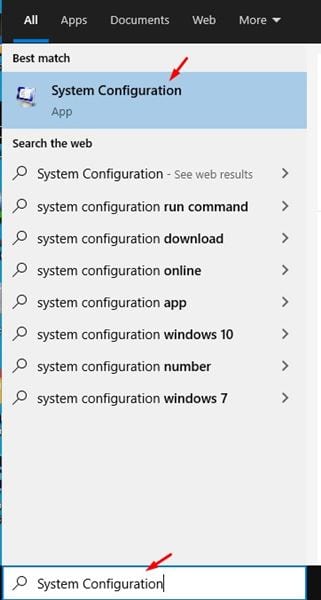

Generally speaking, system configuration is a term in systems engineering it defines what composes the system and its boundary: the computers, processes, and devices. Please let MiniTool help you when you get into data, disk, or system trouble. After that, you’ll understand system configuration well and how to open/use it on Windows 10. The Module size shows the amount of RAM that you have installed and Manufacturer details are also displayed.How much do you know about system configure? What it is? How to open/access it? And what you can do with it? Please read this page carefully if you have no idea of what I’m talking about. The SPD Tab lists the memory slots that are available in your System and shows in which slots your RAMs are located. Mainboard tab gives you the details about your Motherboard Manufacturer and Model. The CPU tab gives you the complete details about your Processor. Extract the contents of the zip file and run the EXE based on your system type(32-bit/64-bit) Download the portable version which is less than 2 MB.

The CPU-Z comes in both installable and portable versions. Though there are lots of tools available to check the system configuration, CPU-Z and HWiNFO are the two that are widely used. There are some utilities readily available which gives much more details about your system than most of the above options. The commands that I have given here is just a tip of the iceberg, PowerShell is very powerful and can get you much more details if you want. Get System Configuration using Power Shell The System Properties gives you some basic details about your system as shown below: You can also press Windows key + Pause/Break key to launch the properties window. Right Click on your My Computer and click Properties. If you are running windows operating system then below are some of the ways to get these details: 1) My Computer Properties There are various ways to get this information and I have highlighted few of them over here for your reference. You can easily find your System Configuration without reaching out to the vendor who assembled the system. If you have assembled the system all by yourself then you should be aware of all these details, but what if the system was assembled by some vendor? System configuration is also useful when you need to update your device drivers, troubleshoot issues in your computer, buy the latest softwares or games, etc. helps you to buy compatible devices for your computer.

Knowing your basic System Configuration details like Motherboard Model, Processor Type etc. When you want to add more memory (RAM) for your desktop computer or buy the latest graphics card available in the market, the first thing you need to know is your system configuration.


 0 kommentar(er)
0 kommentar(er)
